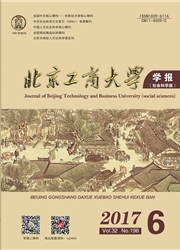

 中文摘要:
中文摘要:
随着中国经济不断发展,金融服务业也逐渐步入快速成长期,但是金融需求尚未得到满足,金融排斥现象普遍存在.文章从区域差异的视角出发,运用主成分分析法与多元回归模型,研究了我国各区域金融排斥的程度与影响因素.研究结果表明,我国各地区金融排斥差异显著,东部地区排斥程度最小,西部地区最为严重;在影响因素方面,金融排斥程度与文盲率和女性人数呈正比,与第三产业从业人数、居民消费水平以及金融机构数量呈反比,与政府支持、人口规模的因果关系并不显著.因此,建议政府在治理金融排斥时,注重园地制宜,发挥政策引导性作用,转变居民观念,结合各地区表现调整政策侧重点.
 英文摘要:
英文摘要:
With the continuous development of China's economy, the financial services industry has gradually stepped into a period of rapid growth, hut the financial demand has not been well met and financial exclusion is widespread. From the perspec- tive of regional differences, this article uses principal component analysis and multiple regression models to study the extent of re- gional financial exclusion and influencing factors in China. The research results show that China's regional financial exclusion is significantly divergent in that the eastern region is the best while the western region is the worst. In terms of influencing factors, the illiteracy rate and the number of females are proportional to financial exclusion while the number of employees in tertiary in- dustry, resident consumption and the quantity of financial institutions are inversely proportional to financial exclusion, which gov- ernment support and population scale are not significantly related to. Therefore, in the management of financial exclusion, gov- ernment should suit the measure to local conditions, bring the leading role of policy into full play, change the ideas of residents and adjust the regional policies combined with the performances of different regions.
 同期刊论文项目
同期刊论文项目
 同项目期刊论文
同项目期刊论文
 期刊信息
期刊信息
